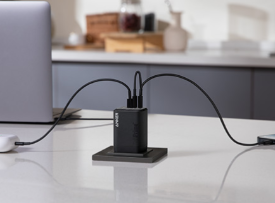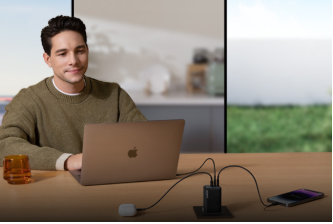Selecting the appropriate phone chargers are crucial for both device performance and safety. Using incompatible or low-quality chargers can lead to slow charging, battery damage, or even safety hazards. Understanding your phone’s specific requirements ensures efficient power delivery while extending your device’s lifespan. This guide will help you navigate the essential factors in choosing the perfect charger, from compatibility checks to safety certifications, empowering you to make informed decisions that protect your investment and keep your device running optimally throughout its lifecycle.
Understanding Your Phone’s Charging Requirements
Check Your Phone’s Specifications
Begin by identifying your phone’s charging port type—modern devices typically use USB-C, while older models may have Micro-USB or Apple’s Lightning connector. Next, verify supported charging protocols through your phone’s specifications or manufacturer’s website. Technologies like Power Delivery (PD), Quick Charge (QC), or proprietary fast-charging systems require specific compatible chargers to function properly. This preliminary research ensures you select a charger that matches both your device’s physical connection and its advanced charging capabilities, maximizing efficiency while preventing potential compatibility issues.
Assess Your Power Needs
Evaluate your daily usage patterns to determine optimal charging requirements. Heavy users who frequently stream content or use navigation may benefit from faster-charging solutions, while moderate users might prioritize convenience and portability. Consider your typical charging scenarios—overnight charging allows for slower, gentler charging, while quick top-ups during the day demand rapid charging capabilities. Understanding these patterns helps balance charging speed with battery health, ensuring you select a charger that aligns with your lifestyle while maintaining long-term battery performance.
Types of Phone Chargers and Their Benefits
Wall Chargers
Wall chargers remain the most common charging solution, offering reliable power delivery directly from electrical outlets. Standard models provide consistent charging for overnight use, while fast-charging variants can replenish 50-70% of your battery in just 30 minutes. Modern wall chargers often feature multiple ports, allowing simultaneous charging of multiple devices. Their compact design makes them ideal for home, office, or travel use, providing a balance between charging speed and convenience for various daily charging scenarios and user needs.

Portable Chargers (Power Banks)
Power banks deliver unmatched charging flexibility for mobile users, providing reliable power anywhere without electrical outlets. These portable solutions range from compact 5,000mAh models that fit in pockets to high-capacity 20,000mAh units capable of multiple full charges. Advanced power banks now incorporate fast-charging technology, multiple output ports, and digital displays showing remaining capacity. Their versatility makes them essential for travelers, outdoor enthusiasts, and professionals who need reliable power access throughout their day, regardless of location or availability of traditional power sources.
Wireless Chargers
Wireless charging offers cable-free convenience through electromagnetic induction technology. Compatible devices simply need placement on a charging pad to initiate charging, eliminating port wear and cable clutter. While generally slower than wired alternatives, modern wireless chargers have significantly improved efficiency, with many supporting 15W fast charging. The technology excels for bedside or desk use, providing effortless charging throughout the day. However, users should note the requirement for specific phone compatibility and potential limitations in device positioning and charging speed compared to traditional wired solutions.
Key Factors to Consider When Choosing a Charger
Compatibility
Charger compatibility involves both physical connections and technological protocols. Ensure the charger’s cable interface matches your device’s port—USB-C for modern Android devices, Lightning for Apple products, or Micro-USB for older models. Beyond physical compatibility, verify support for your phone’s charging technology, whether standard charging, Qualcomm Quick Charge, USB Power Delivery, or manufacturer-specific protocols like Samsung Adaptive Fast Charging. Using incompatible chargers may result in reduced charging speeds or potential device damage, making this the most critical consideration in your selection process.
Charging Speed
Charging speed depends on wattage output, measured in volts and amps. Standard chargers typically provide 5W-10W, while fast chargers range from 18W-65W. Higher wattage enables quicker charging but requires device compatibility to function effectively. Check your phone’s maximum supported charging speed—exceeding this limit won’t provide additional benefits and may generate excess heat. For optimal results, match the charger’s output to your device’s capabilities, balancing speed requirements with battery health considerations for both immediate performance and long-term device maintenance.
Safety and Certification
Prioritize safety certifications like UL, CE, or RoHS when selecting chargers, as these indicate compliance with international safety standards. Certified chargers incorporate essential protection against overvoltage, overheating, and short-circuiting. Avoid uncertified or counterfeit products that may lack proper insulation and safety mechanisms, potentially causing device damage or safety hazards. Reputable brands typically provide clear certification information on product packaging or specifications, offering peace of mind that your charger meets rigorous safety requirements for reliable, risk-free operation throughout its lifespan.
How to Avoid Common Pitfalls When Buying a Charger?
Beware of Counterfeit Products
Counterfeit chargers often mimic reputable brands but compromise on safety and performance. Identify genuine products through official packaging, proper branding, and reasonable pricing—extremely low prices often indicate counterfeit goods. Examine build quality for imperfections, loose components, or lightweight construction. Verify authenticity through manufacturer websites or authorized retailers. These substandard products frequently lack proper safety mechanisms, posing fire risks and potential device damage. Investing in genuine chargers from reputable sources ensures both safety and optimal charging performance, protecting your device and personal safety.
Read Reviews and Ratings
Thoroughly research potential purchases through multiple review sources before buying. Check professional technology websites for expert analysis and user reviews on retail platforms for real-world experiences. Focus on reviews discussing long-term reliability, actual charging speeds, and durability. Look for patterns in feedback—multiple reports of the same issue typically indicate genuine product concerns. Trusted review platforms and technology forums provide valuable insights beyond manufacturer claims, helping you avoid problematic products and identify chargers that consistently deliver promised performance and reliability across various usage scenarios.
Conclusion
Selecting the right phone charger means considering compatibility, speed, and safety. Know your device’s needs and choose certified products from trusted makers. Factor in your daily charging habits to pick the best option. A good charger boosts efficiency and protects your phone’s longevity. Rely on these tips to make smart choices, ensuring top performance and personal safety.
